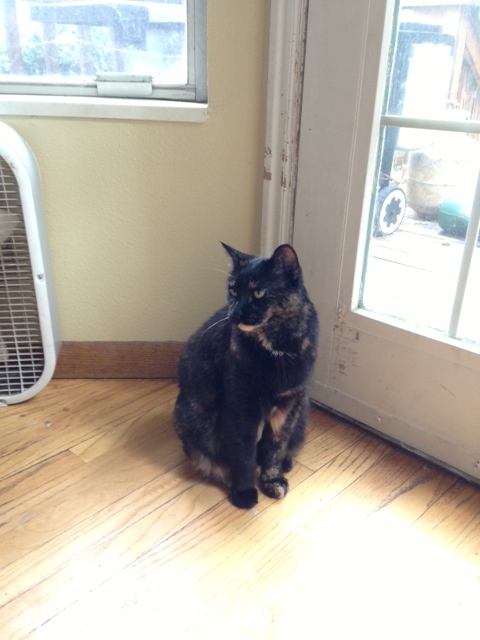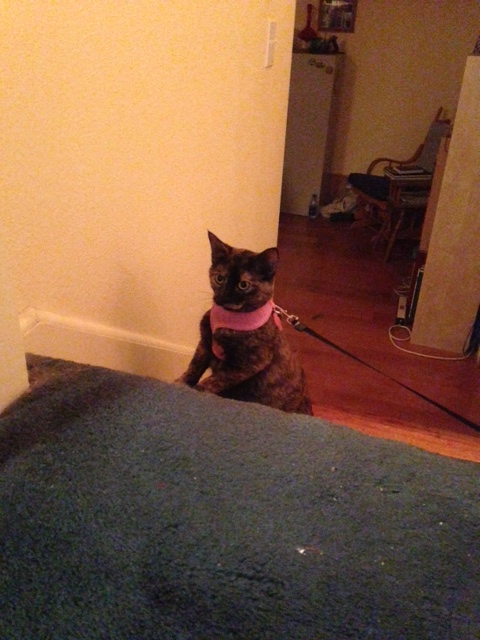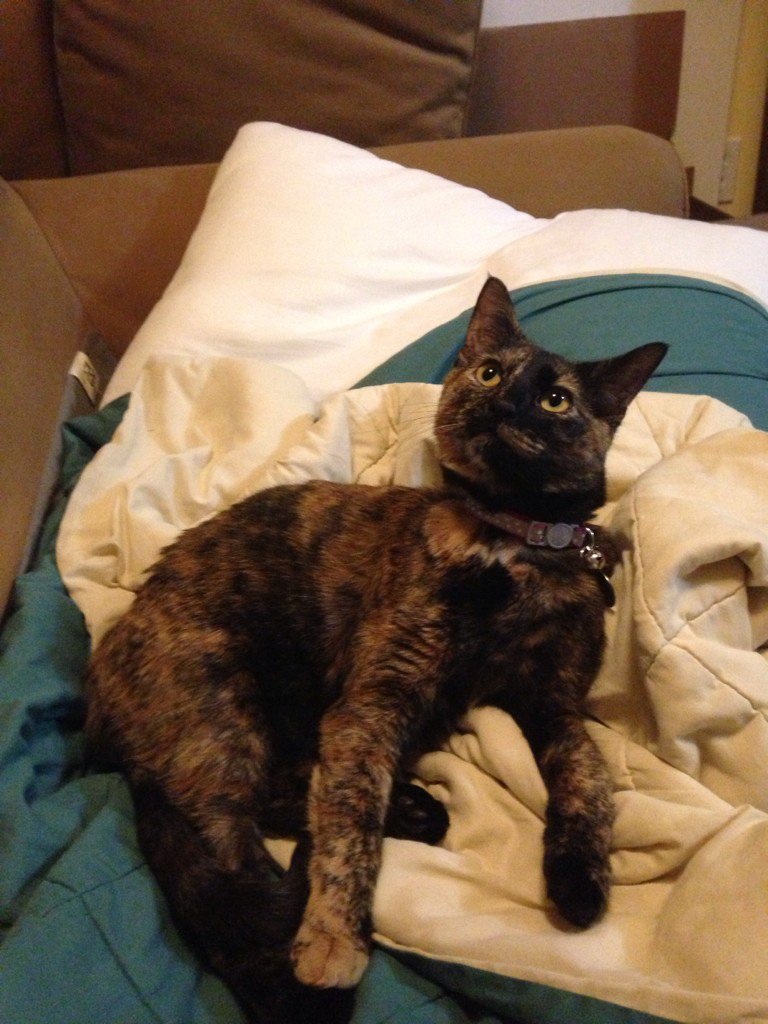A week ago I got to reprise my presentation on Structuring Life to Support Creativity. Unfortunately I heard from people who had to miss it because of conflicts or space issues. So I’m putting up the notes from the presentation here. They are rough notes rather than a fully flowing blog post. If I were to write this out fully, it would need to be 10,000 words or more. I first gave this presentation in 2013. There are some differences in information that I covered, so reading the original version might also be worth your time, you can find it here.
I always begin this presentation by saying that creative pursuits are patient. They will wait for us until we have time to get back to them. It is important to remember this when we are in a period of time where we need to do other things. I’ve had long spaces of time where I had to set aside fiction writing because I needed to focus my creative energy on business, or family, or health management, or grieving, or emotional processing. I lost nothing by taking care of these things first and then coming back to writing. Usually my creative efforts are better for taking time out to manage life events.
Know your goals and priorities
The first task to do when trying to fit a creative pursuit into your life is to step back and examine which things are the most important to you. For me family and loved ones are more important than creating books, even though I love both. This is the major reason that I sometimes spend long stretches without writing fiction: I am spending energy on the hugely creative task of raising children. And any creative task you undertake will interfere with any other creative task you want to do. A lot more occupations are creative than are generally considered creative. We create friendships, orderly homes, art projects, parties, etc. Service that we do for churches, schools, or communities can be hugely creative. Sometimes the work we do for a day job is also very creative. Grieving and emotional processing of life are when we re-create ourselves. Stepping back and analyzing what is most important so you can spend your creativity on that will help you be happier in your life, even if it means you’re spending a bit less time on the thing you thought was your one creative pursuit.
Recognize the pillars of your life.
Many creative people have a day job that literally keeps a roof over their head. Often this day job is viewed as a frustration or a distraction. However the ability to pay bills actually supports creativity. Maslow described this in his hierarchy of needs. We are less able to put energy into creation if we don’t know where our food will come from next week. Household tasks are another pillar that many people resent as a distraction from creativity. However if your surroundings are chaotic, the clutter in your physical space and clutter of undone To Do items in your head may make it difficult to accomplish the creative work you want to do. Social relationships are a third pillar. There is significant variance in the human need for company, but most of us do best, and are most creative, when we have emotional connections with others.
I mentioned before that things like grieving can interfere with creativity. The same is true of frustration or resentment. Any energy we spend on resenting a necessary life task subtracts from the energy available to create new things. Time spent maintaining your pillars creates a space where your writing or art can happen. I become much happier about doing maintenance tasks when I can see how they make the creative tasks possible.
Know your supports and emotional drags
Figuring this out starts with looking at the people in your life. Think about them.
Who supports you in ways that energize you?
Who claims to support you, but somehow you always end up discouraged after being with them?
Who doesn’t support you or actively interferes with your creativity?
You may want to adjust the quantity of time you spend with people who sap your creativity. Or you may want to re-frame that time so that it is further away from your creative spaces. Go to a movie and then talk about that movie instead of going to lunch and end up explaining why you want to be a writer.
Also look at your pillar maintenance tasks. The things that keep your life structure stable. This is when your family/housemates/friends become very important. Because some of those maintenance tasks do drag on your creativity while others are neutral or feed into creativity. If laundry sucks your soul, perhaps make a deal with others in your house so that they manage the laundry while you manage something else. Communication with the people in your support network is crucial. As you are building space in your life for creativity, they also have to give space for that creative effort. Make sure that these discussions include the sacrifices you will make to meet their emotional needs right along side the sacrifices you need them to make for your creative pursuits. (IE, you get one hour of uninterrupted writing time each day, but on Saturdays they get to go out to do their hobby thing.)
Consider what blocks of time and what physical space you can devote to your creative pursuit. Having a physical space can be helpful, even if the space is only contained inside a laptop or notebook. Entering your creative space can teach your brain to open up your creative thoughts, helping you to get in the zone faster. In order to create that space I’ve known people who depend on the smell and flavor of a favorite beverage, others light a candle, or have turned a closet into an office, or have an actual office. Some go to a coffee shop or a library. Some just put on headphones and particular music. The key is that at the schedule time you enter your creative space and train your brain to open up your creative thoughts. Then when you exit you can carry the thoughts with you or close them up as necessary to face the next task of your day. If you haven’t organized a space or made a schedule for time, then that is likely a significant drag on your creative efforts.
Plan your creative effort around your pillars
There are scientific studies done about willpower and how it is a limited resource. Anecdotally, I know this is true for me. Every decision I make is an exercise of willpower and makes following decisions more difficult. This is one of the reasons that decision heavy tasks, such as parenting, can be a huge drain on creative energy. Knowing this can help you as you structure time in your day to make room for creativity. It takes a large amount of willpower to stop playing a video game and go write. It takes less willpower to start writing right after you have finished lunch. In fact if you build a habit of lunch-then-writing the transition to writing takes no willpower at all. And the transition to lunch is helped by the biological imperative of hunger. I call this process setting a trigger.
I rely heavily on triggers. The routine of getting kids off to school in the morning triggers me to get out of bed early. Then once they are out of the house, the quiet reminds me that I need to get to work. Using an externally impose structure like a school schedule is very helpful in scheduling creative time. Our schedules go very mushy in the summer when we don’t have that external structure. In the absence of kids or school structure, I know creatives who sign up for classes, make writing date appointments, use a day job, or use scheduled volunteer work to provide external structure in their day. Using an external structure reduces your willpower load.
It is possible that some of your pillars will absorb creative energy for a time. If you’re struggling to pay bills, then the best use of your creative energy might be to go back to school and get training, so you can get a better job, so that you can be less stressed by bills, so that you have more room in your brain for creative things.
Analyze your blocks
Some things will interrupt your creative time. Other things will prevent you from starting. A challenge I regularly face is that if I know an interrupt is coming, say I have an appointment in an hour, there is part of my brain that doesn’t want to get started on a creative task because I know I’ll be interrupted. To combat this, I had to teach my self that five minutes is enough time to get something done. This is where visualizing my creative thoughts as existing in a cupboard in my brain has been very helpful to me. I open the cupboard and use those thoughts for five minutes then close up the cupboard again and move on with other tasks.
Alternately, you can rearrange the other parts of your life to defend large chunks of creative time. I know many writers who do this. It works best if your support network understands the need for those large blocks of uninterrupted time and participates in helping you defend them. If your support network doesn’t do high-focus creative work, it might be good to spend some time helping them understand creative flow. Because a two minute interrupting half way through an hour of writing time means that you don’t have an hour of writing time, you have two half hour writing times. Minus the time spent putting away whatever thoughts were opened up by the interruption. It often helps to have a visual signal to tell people not to interrupt you. We set up a string of flower lights at the entrance to my office. When the lights are on, my family knows to only interrupt if absolutely necessary.
The list of mental/emotional things that can block creating is a presentation to itself. I called that presentation Breaking through the Blockages and gave it at LTUE in 2015. Clicking this link will lead you to notes from that presentation. In addition to the points covered in that presentation, I add the thought that if you are doing emotional processing of grief or a life change, that emotional process is a creative one. It will absolutely interfere with your other creative efforts. We don’t usually think of grief as creative, but the process of grief is frequently one of letting go an old way of being while creating a new self that no longer centers the object of the grief. Self re-creation and grief are messy processes that slop over into unexpected spaces and pop up at inconvenient times. If at all possible don’t layer guilt for not creating on top of these processes. Remember the very first thing in this post, creativity will wait for you. This can be tricky to remember if one of the things you are grieving is lost creative time.
In my first iteration of this presentation I spent an entire segment on biological rhythms. This time I passed over it lightly, mostly because an audience question reminded me. We all have times of day where we’re energetic and times when we feel sluggish. Pay attention to your patterns, and if at all possible, schedule your creativity for the time of day when you feel energetic.
Transformations vs. incremental changes
When people come to a conference or creative retreat, they sometimes leave filled with energy and plans for renovating their entire life. Take a moment to consider how you want to manage that renovation. A massive effort to change everything often fails for several reasons. Habit is strong, and if you want to create a new pattern, you need to create structure that makes falling back into the old habits difficult.
The example I used was deciding that I spend too much time on facebook. If I declare that I’m going to spend no more than an hour per day on facebook, but don’t put any structure around that declaration, I’m likely to fail inside of two days. If I decide that any time I get on facebook I will set a one hour timer, that is better. I have a trigger to remind me to exit facebook. However I have to use willpower to set the timer and then I have to use willpower to turn off facebook when the timer beeps. It is very easy to forget the timer or distract past the alarm. If I install nanny software that automatically limits my facebook time to one hour per day, that has a better chance at working. I only have to decide to install the software once instead of once per day timer setting. And if I want to extend my facebook time it requires a decision and effort to do so. If I wanted to be even more certain that I’ll stay off facebook, I could delete my account entirely. This puts a significant logistical barrier to returning to facebook. An even more thorough method would be to completely cancel my internet. This last option would forcibly change many patterns in my life, and would have a signifcant impact on other members of my household, which brings me to the next reason that huge transformational life renovations often fail: transformation is hard on your support network.
Making sweeping changes all at once will make other people in your life uncomfortable. Because they are uncomfortable they may (consciously or unconsciously) pressure you to “return to normal.” For this reason massive life transformations can seriously disrupt relationships, which is why communication is critical during transformations. Also critical is disrupting old habit paths and putting road blocks to getting back to them. Certain life events make some level of transformation inevitable: Moving, getting married, getting divorced, birth, death, new day job, diagnosis, adoption, etc. These events inherently make some old habits impossible and provide an opportunity to build new habits. Building new habits is a creative process that will interfere with your other creative process until the new habit is established.
In order for a transformation to work, you have to be willing to let go of your old way of doing things. This may mean letting go of things you like in order to fix something you want to change. An example: I’ve long wanted to switch my online store software to a new system because the one I’ve been using is out of date. I began the process and then discovered that the new store system connects smoothly to my accounting software, but only if I switch to the online version of the accounting software. In order to fix my broken store system, I have to let go of an accounting system that was working just fine and re learn how to do my accounting. I have to be willing to change the thing I like to fix the broken thing.
The alternative to massive life transformation is incremental life change. This is transformation in pieces and at a small scale. It allows you to change a portion of your life and to let that change settle in before changing something else. Small changes can have significant ripple effects. For example: setting up a physical space for your creative efforts is not hugely disrupting to your regular life patterns or to your support network, but having it suddenly enables you to signal when you’re busy, allows you to set up creative triggers, and helps you open up your creative thoughts. Small changes can be significant. And accumulation of small significant changes will, over time, result in life transformation.
Health and Spoon Theory
If you have not heard about Spoon Theory, I recommend reading the linked article. It is a handy metaphor for understanding that we are not all granted the same quantity of energy each day. Some people can make 1000 decisions (or exercises of willpower) per day, others can only handle ten. Sometimes just managing ill health uses up 3/4 of your available energy, pillar maintenance uses up almost everything else, leaving only a sliver of energy for creativity. Being a caretaker for someone else can have the same toll. This is hard and not fair.
Unfortunately grieving (or raging) of your limited supply of energy also uses up the supply. Grief is often a necessary process in relation to ill health or caretaking, but pay some attention to moving through those emotions mindfully. Process them with your support network, with a therapist, with the help of books dealing with your issue. It can be easy to just sit with grief instead of moving through it. Resist the urge to shove it aside so you can focus on other things. “Shove aside” can be a necessary short term strategy, but unless you process that emotion, you’re stuck with it. And it accumulates. And it leaks into every aspect of your life.
Be aware that diagnoses almost always trigger grief (and a host of other emotions.) If you or someone you love gets a diagnosis, you’ll need to process it. The amount of processing depends on you, your past experiences, the pervasiveness of life change, how others around you are handling it, and a host of other factors.
If you are a healthy person, be aware that you know someone who isn’t. Take time to be part of a support network for someone who struggles. Solid support makes all the difference in being able to carve out creative time.
Break your patterns / get out of your box
As you are renovating to make room for creativity, be careful not to remove from your life all of the “distractions” that filled up your creative aquifer. Creative minds need rest. They need time to switch off from all the thinking. This is why you often see creative people diving into binge watching TV or playing video games. They need a comfortable retreat. That is important. However be on the alert for dysfunction in your habits. Eight hours of sleep is necessary for health. Fifteen hours of sleep is a sign that something is wrong. Two hours of video game may be refreshing. Ten hours of video game has almost certainly passed the point of diminishing return.
When you discover that your habits keep you contained in the same round of things, take time to do something new. Try a new activity. Go to a new place. Talk to new people. Get outside your comfort zone. Even if the new experience is uncomfortable and/or unpleasant while you’re going through it, you’ve still filled your brain with new material that you can draw on when you’re creating. Also, many times new experiences end up being enjoyable.
As a suggestion: donating time to helping others is a brilliant way to have new experiences and to fill up your creative/emotional energy.
Expect iterations
As you’re making changes whether they be incremental or transformational, you should expect a try/fail cycle in figuring out your life structure. Even if you do figure out the absolute perfect system where all the parts are working smoothly together, something in your life will change and that system will fall apart. If you know in advance that this is inevitable, you make be able to skip the part where system failure feels like a personal failure.
The example I often use for this is laundry. When Howard and I first got married we had one laundry basket. It was simple and effective. Then we had a baby, and another, and another. I discovered that adding a baby managed to triple the amount of laundry. The basket was always mounded and there were mounds on the floor. I always felt buried under laundry and overwhelmed by it. Then one day someone (probably Howard) said “Sandra, you can have more than one basket.” And he was right. Purchasing one basket per person suddenly changed a massive mound into neat baskets where clothes were sorted by person. All it took was recognizing that the system which worked great for two people was a complete failure at trying to handle five people.
When creativity is getting squeezed out of existence, stop and take time to figure out why the system that used to work isn’t working any more. Salvage pieces that are still working and rebuild.
I close the presentation with questions from the audience. Often the answers to specific questions generate some of the best insights of the presentation. Frequently this happens when one audience member has an answer for another audience member’s struggle. So I close with the reminder that if you’re struggling, you’re not the only one. If you ask your support network, online friends, family, odds are good that someone has exactly the words you need to help you move forward.
Best of luck in your creative efforts.







